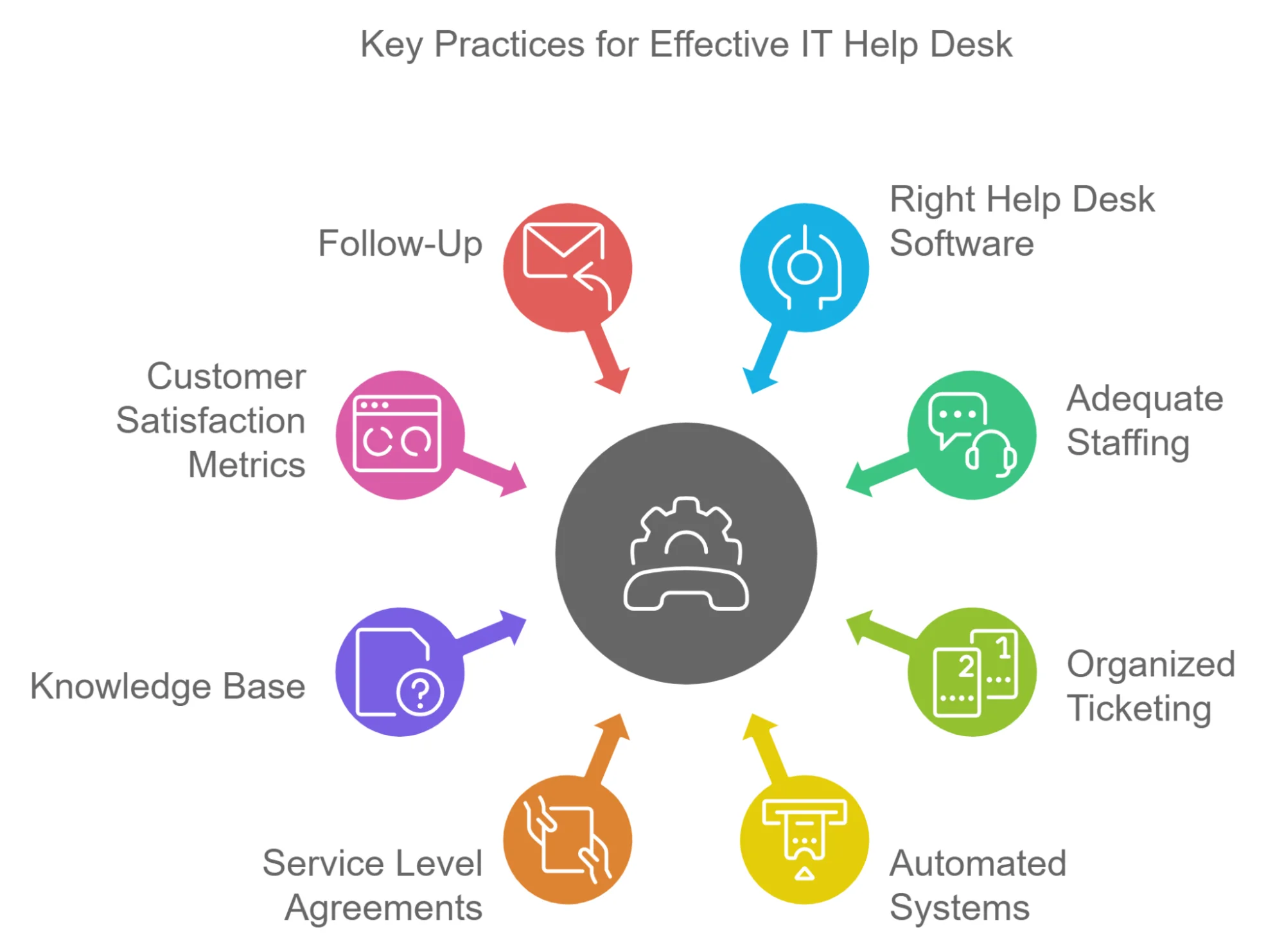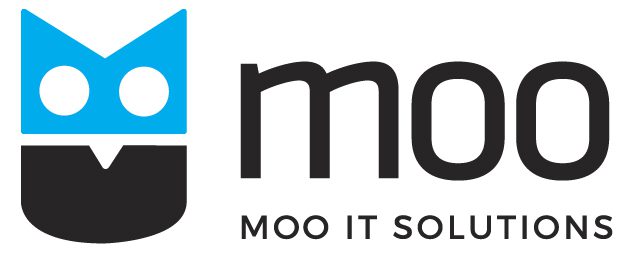In today’s fast-paced business environment, avoiding technical issues that can disrupt daily operations is crucial. However, many organizations struggle to troubleshoot IT problems while managing their day-to-day activities. Implementing IT help desk best practices is a key solution to overcome this challenge.
Providing effective IT support is fundamental to customer satisfaction and employee productivity. Since the onset of the pandemic, the average number of IT tickets has risen by 16%, and this figure may continue to climb as more businesses adopt remote or hybrid work setups.
| “Implementing the right IT help desk best practices not only improves your efficiency but also enhances user satisfaction, which is one of the keys to long-term success,” says Anthony Moussa, President of MooIT Solutions. |
To ensure your help desk operates smoothly and avoids unresolved tickets, adhering to IT help desk best practice principles is essential.
In this guide, we’ll review eight key IT help desk categories best practices, and explain why they are critical for managing your help desk effectively and improving customer support.
Work with a Partner that Adheres to Every IT Help Desk Best PracticeEnjoy responsive support backed by a five-minute average resolution time. |
IT Help Desk vs. Service Desk: What’s the Difference?
A service desk involves a human interface that assists users with complex IT issues. Service desk agents typically handle requests for additional services or further information.
On the other hand, an IT help desk adopts a break-fix method, where automated software creates support tickets for simpler IT issues. Help desks enable your support team to manage ticket volumes more efficiently.
End-users can engage with a help desk platform to resolve problems, which may escalate to the service desk if needed. The best practice is to utilize the help desk as an extension of your current IT support team.
The Top 8 IT Help Desk Best Practices Explained
1. Select the Right Help Desk Software
Choosing the appropriate help desk software for your business is vital. Focus on tools that are intuitive, seamlessly integrate with your systems, and enhance resolution times.
Opt for software that offers a user-friendly service portal, allowing end-users to submit requests quickly. This feature will enhance the user experience and build trust with your customers.
2. Staff Adequately to Meet User Support Demands
According to CloudSecureTech, 78% of businesses worldwide reported facing a tech talent shortage in 2023. Larger organizations naturally receive more support requests than smaller ones, simply due to the higher number of users. Ensure you have enough staff to handle incoming tickets within a reasonable timeframe.
If your support agents are overwhelmed, they won’t be able to resolve issues promptly, leading to dissatisfied clients. When hiring, also consider the geographical locations of your support team to provide consistent service across different time zones.
3. Organize Support Tickets by Categories
Efficient ticket organization is key to resolving issues swiftly. Categorizing tickets by issue type – such as bugs, feature requests, or user queries – enables teams to prioritize and tackle issues effectively.
Implementing the correct IT help desk category best practices includes:
- Using specific category labels for clarity
- Adding extra fields like request time and user ID for better ticket insights
- Ensuring your agents can easily navigate between categories like “open tickets” or “resolved tickets” to streamline responses
4. Leverage Automated Ticketing Systems
Incorporating automated ticketing systems can boost your support team’s efficiency, with a 69% increase in work satisfaction reported among agents using these tools. While automated systems won’t replace human agents, they help manage ticket volumes effectively.
Automated systems also ensure that tickets are directed to the most suitable personnel for resolution and can address basic IT issues automatically, freeing up your agents’ time.
5. Implement a Service Level Agreement (SLA)
Holding your IT team accountable with a Service Level Agreement is important. Your SLA should set clear expectations, such as minimum response times and acceptable resolution rates, helping motivate the team and track their performance.
SLAs also serve as a reference point in conversations with your team to avoid miscommunication about expectations.
6. Create a Comprehensive Knowledge Base
Having a well-maintained knowledge base allows support agents to access information on common issues quickly. It can include troubleshooting steps, key contacts, and guidance on escalating cases.
A robust knowledge base helps reduce resolution times by allowing agents to resolve issues without needing to create new solutions from scratch.

7. Monitor Customer Satisfaction Metrics
Tracking both the resolution speed and customer satisfaction is essential. Measure how many tickets are unresolved after a specific time frame and send surveys to users after resolution to assess their satisfaction.
This data can highlight areas where your support services need improvement, such as additional training for your team or upgrading software tools.
8. Conduct Post-Resolution Follow-Ups
Research shows that 81% of consumers prefer personalized service. Although challenging, especially for businesses with large client bases, sending follow-up messages after resolving a ticket can enhance user satisfaction and make them feel valued.
Even for minor issues, following up with a customer can leave a lasting positive impression, which results in clients requesting repeat assistance from the help desk while also building trust.
| More articles you might like: |
Step-by-Step Guide to Improve IT Help Desk Efficiency
| Step | Action | Goal/Outcome |
| 1. Evaluate Current Performance | Conduct an audit of current IT help desk processes, response times, and customer satisfaction | Identify areas that need improvement and set a baseline for measuring progress |
| 2. Train and Upskill Staff | Provide ongoing training to help desk staff on new technologies, customer service, and tools | Equip the team with the necessary skills to handle a wider variety of issues effectively |
| 3. Implement Ticket Prioritization | Introduce a clear system for prioritizing tickets based on urgency and impact | Ensure critical issues are addressed first, improving customer satisfaction |
| 4. Integrate Self-Service Options | Create a knowledge base or FAQ section that users can access to solve common issues | Reduce ticket volume by empowering users to resolve simpler problems themselves |
| 5. Regularly Review SLAs | Monitor compliance with Service Level Agreements (SLAs) and adjust if necessary | Maintain accountability and ensure timely resolutions to meet business expectations |
| 6. Gather and Analyze Feedback | Send post-resolution surveys and regularly review feedback from users | Use customer feedback to make continuous improvements in service delivery |
| 7. Adopt Automation Tools | Introduce automation to manage ticket routing and basic issue resolutions | Boost efficiency by freeing up help desk agents to focus on more complex issues |
| 8. Schedule Regular Team Reviews | Hold team meetings to discuss common issues, resolutions, and potential process improvements | Foster a collaborative environment and ensure alignment on help desk strategies |
Partner with Experts who Follow IT Help Desk Best Practices
While these eight IT help desk best practices provide a solid foundation, getting professional advice can elevate your IT support to the next level.
At MooIT Solutions, we specialize in helping businesses streamline IT support and reduce costs. Our dedicated help desk team provides 24/7 monitoring, ensuring you receive high-quality support at any time.
| Trusted Help Desk Services Near You | |
| Newark | New Jersey |
We also focus on minimizing recurring issues by utilizing a smart ticketing system that delivers fast, impactful resolutions within only five minutes, and long-term solutions.
Get in touch with us today to learn how working with us can simplify your IT support, improve customer satisfaction, and enhance your team’s efficiency.



